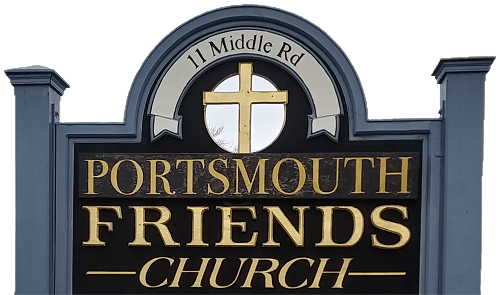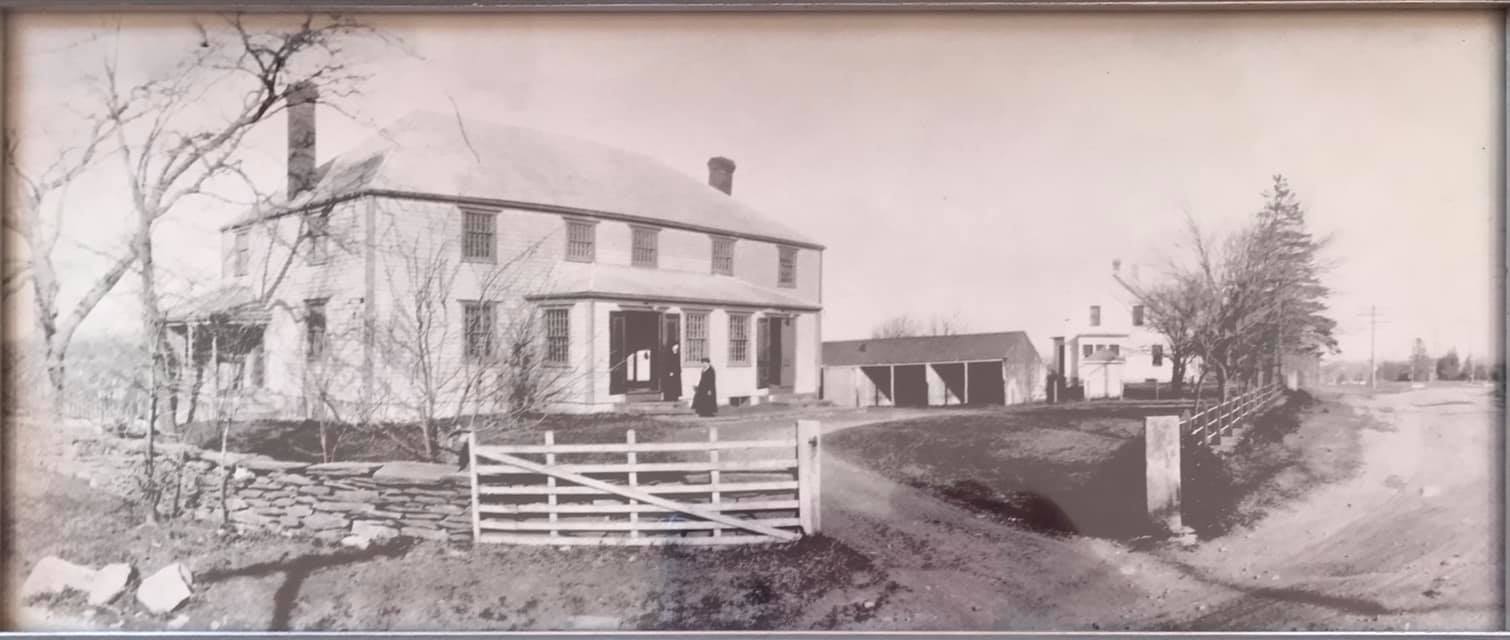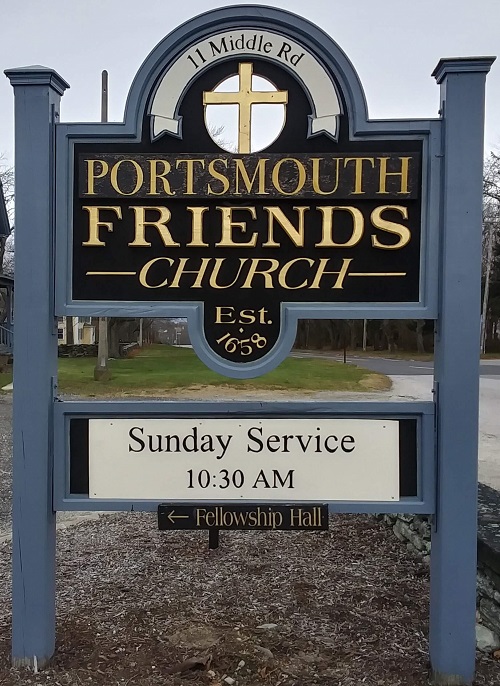The History of the Portsmouth Friends Church
As early as 1657 a small but determined band of English Friends arrived in Rhode Island and at last found a haven where they could enjoy individual liberty and freedom to proclaim the principals of their convictions. One of the first meetings to be organized was in Portsmouth.
Early Meetings
Although the records (which are now in the Newport Historical Society) go back as far as 1676, it is supposed that a Monthly Meeting was set up in Rhode Island in 1658 which included Newport and Portsmouth meetings. For many years the members met in private homes.
Churches Foundation
In 1692 a lot with a house had been purchased for meetings. On August 17, 1699 it is recorded "Friends have laid out and appointed the place where the meetinghouse shall stand and have brought great stones and other stones to lay the foundation." Around April of 1700 the old meetinghouse was sold, and the proceeds applied to the new meetinghouse. In October of 1701 sheds for the horses were built, at which time it is probable that the meetinghouse was in use. In 1705 an addition was built on the meetinghouse for the women's meetings.
Revolutionary War
During the Revolutionary War the British drove out the Quakers and used the building as a barracks and its basement as a magazine for storing ammunition. After the Battle of Rhode Island, the victorious Americans took possession of the meetinghouse for similar purposes. During this time the Friends were meeting in private homes. Later, in cleaning out the cellar, workmen found several cannonballs. Two of these are still in the building today.
To learn more about Quakers in Portsmouth during the Colonial Period, click this link to listen to a talk by Steve Luce of the Portsmouth Historical Society.
Building Upgrades
In the late 1800's considerable remodeling was accomplished on the meetinghouse. Fine finished lumber was used to sheath the exposed interior beams and a new partition between the men's and women's sides was added. New window shutters, pews, balcony railings and new brick fireplaces were installed. Also added at this time were the open porch and privy on the south side and a new entrance replaced the old separate entrances. In early 1900 the first electric lights were installed. In 1958 the basement was finished with a kitchen, bathrooms and a nursery. The present lights were installed in 1960, and the carpet in 1973.
Family Center
In 1990 the congregation saw the need to update the building for accessibility and meet the growing needs of the congregation. The addition would respect the history of the meetinghouse while meeting the needs of the congregation. In December of 1993 ground was broken for the new building. This addition provided a new entrance, library, meeting rooms and an office on the upper level. On the lower level were new accessible bathrooms, a kitchen and a large fellowship hall. After the addition was built the old basement was renovated into updated classrooms and nursery.
Darker Times
Sadly, as the membership dwindled, the National affiliated denomination closed the church in 2017. In 2020 the property went up for sale. The congregation rallied and with some legal help regained the meetinghouse on May 4, 2020. With three years of neglect, there is much to repair. There were numerous leaks in the roof, rotted windows and broken pipes from freezing. To date most of the leaks have been patched, the heating system is running, and some windows replaced. With a very limited budget, we have the building back and are addressing some much-needed repairs.
Building Fund
We are currently finishing the trim around the windows that we replaced and have installed a new flat roof over the entrance. We have managed to keep most of the elements from doing more damage to the building. The back windows in the stairway will not make it through another winter. The south chimney also has a leak that needs attention.
Estimates and Cost
The rising cost of materials and the limited availability of contractors makes budgeting the projects difficult. The estimates that we are getting range from $15,000 to $25,000 for the back windows.
How Can You Help?
We are looking at ways to raise the money to preserve this great building and its history. We welcome fundraising ideas and monetary donations. Learn more about ways you can help us


